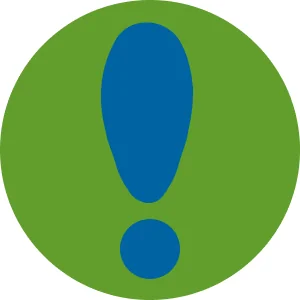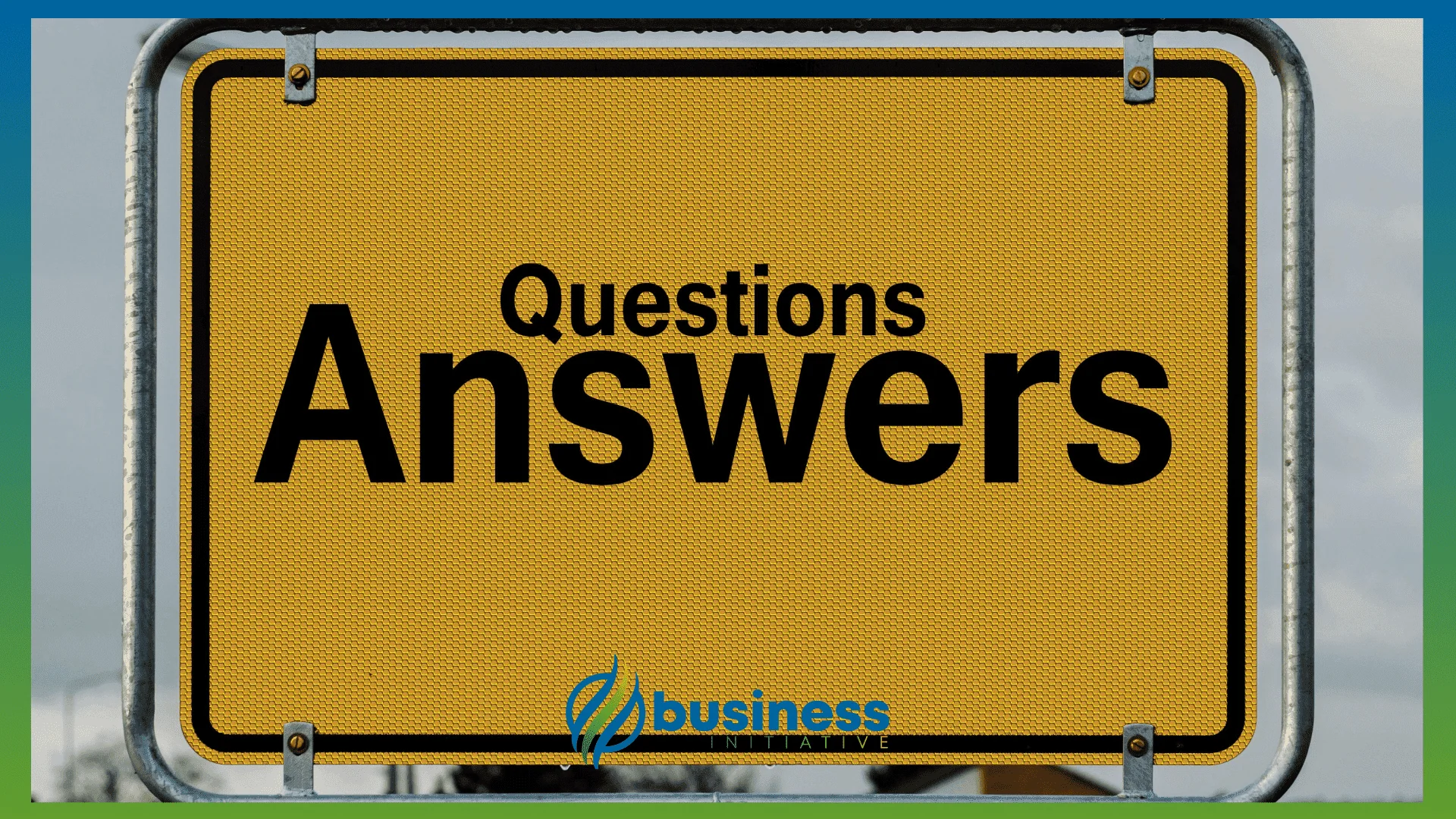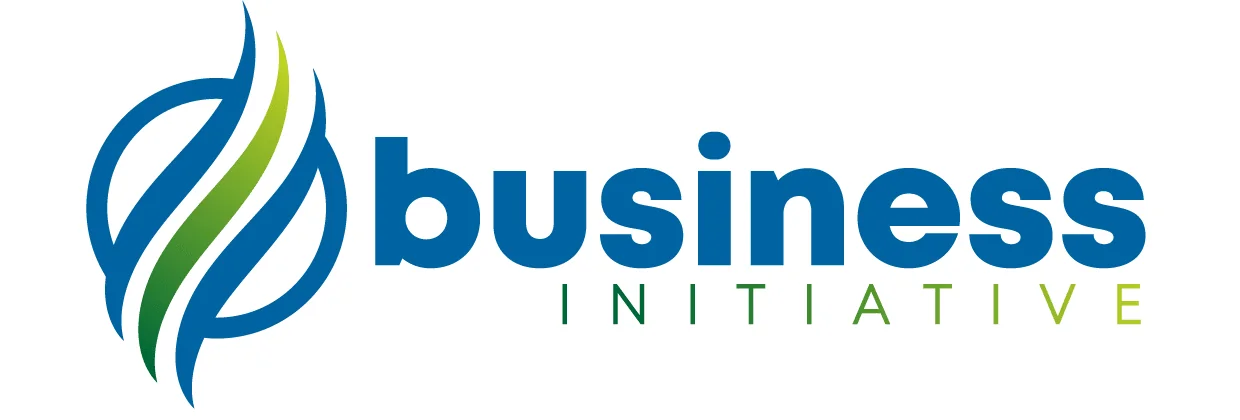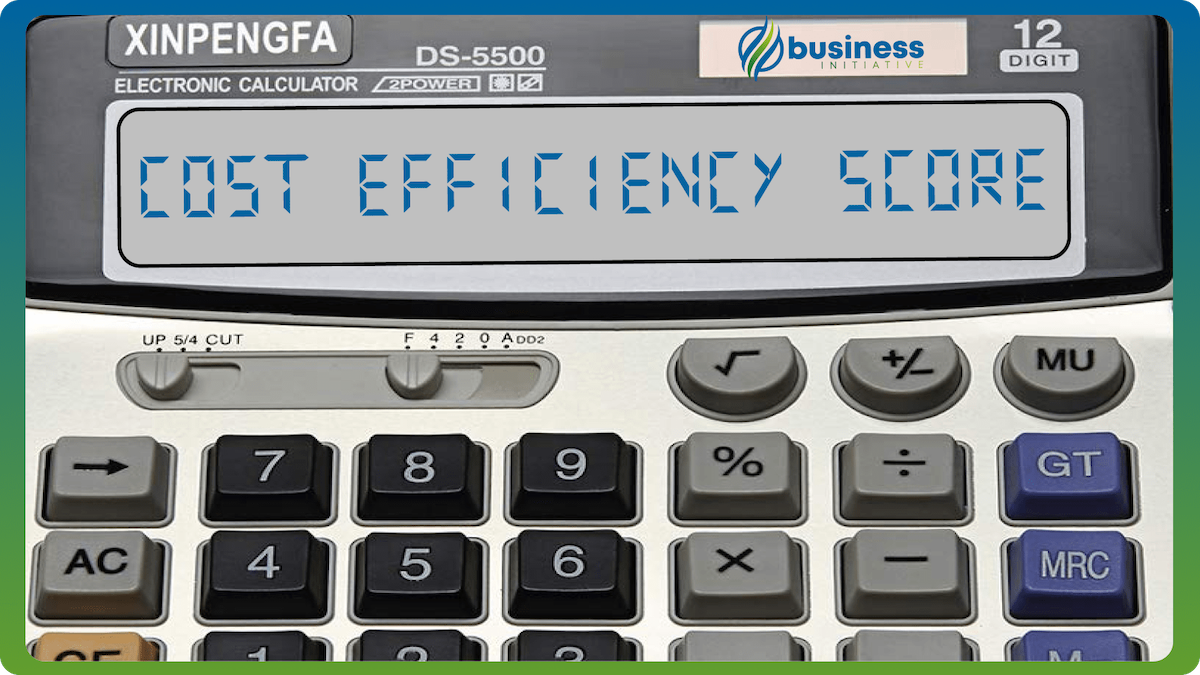Cost efficiency is the cornerstone of sustainable business operations and competitive advantage. Understanding how effectively your business converts operational investments into revenue provides crucial insights for strategic decision-making, resource allocation, and performance optimization across all aspects of your organization.
Whether you’re streamlining operations, preparing for investor presentations, benchmarking against competitors, or planning efficiency improvements, measuring cost efficiency helps identify opportunities for optimization while maintaining quality standards and customer satisfaction.
Our comprehensive cost efficiency calculator not only measures your operational performance but also provides strategic insights into process optimization, resource allocation, and competitive positioning to help you achieve superior operational excellence and sustainable profitability.
 Table of Contents
Table of Contents
 Key Takeaways
Key Takeaways
- Measure operational performance accurately
- Identify cost optimization opportunities
- Benchmark against industry standards
- Improve resource allocation decisions
- Enhance competitive positioning
How to Use This Calculator
Simply enter your total revenue, operating costs, and team size for the same time period (monthly, quarterly, or annually), then click calculate to get your efficiency score.
What to Include:
- Revenue: All income from sales, services, and business activities
- Operating Costs: All business expenses (salaries, rent, supplies, marketing, etc.)
- Team Size: Number of employees (count part-time proportionally)
Interpreting Your Results:
- Above 50%: Excellent efficiency - strong operational performance
- 20-50%: Good efficiency - solid performance with room for improvement
- 0-20%: Below average - needs optimization
- Below 0%: Operating at a loss - immediate action required
The calculator also shows key metrics like profit margin, revenue per employee, and provides personalized insights to help optimize your operations.
Cost Efficiency Score Calculator
Performance Insights
Understanding Cost Efficiency Score
The cost efficiency score measures how effectively your business converts operating costs into profit, calculated as: ((Revenue - Operating Costs) / Operating Costs) × 100
Efficiency Score Ranges:
- Above 50%: Excellent - Very efficient operations
- 20-50%: Good - Solid efficiency with room for improvement
- 0-20%: Below Average - Needs optimization
- Below 0%: Poor - Operating at a loss
Key Performance Indicators:
- Net Profit Margin: Percentage of revenue retained as profit
- Revenue per Employee: Productivity measure per team member
- Cost per Employee: Average operating cost per team member
- Profit per Employee: Net profit generated per team member
Improvement Strategies:
- Revenue Optimization: Increase pricing, expand market reach, improve products
- Cost Management: Reduce unnecessary expenses, negotiate better supplier terms
- Productivity Enhancement: Implement automation, improve processes
- Team Efficiency: Invest in training, optimize team structure
Industry Benchmarks:
- Technology: 30-60% efficiency scores are common
- Manufacturing: 15-35% typical range
- Services: 20-45% average range
- Retail: 10-25% common range
Cost Efficiency Optimization
Revenue Enhancement Strategies
1. Pricing Optimization
- Conduct regular pricing analysis and competitor benchmarking
- Implement value-based pricing models aligned with customer outcomes
- Create premium service tiers and product bundles
- Optimize pricing for different customer segments and markets
2. Product Mix Optimization
- Focus on higher-margin products and services
- Eliminate or improve low-performing offerings
- Develop recurring revenue streams and subscription models
- Cross-sell and upsell to increase customer value
3. Customer Segmentation
- Target most profitable customer segments
- Improve customer lifetime value through retention strategies
- Reduce customer acquisition costs through referral programs
- Optimize sales processes for higher conversion rates
Operational Efficiency Improvements
1. Process Automation
- Automate repetitive manual tasks and workflows
- Implement customer relationship management (CRM) systems
- Use artificial intelligence for data analysis and decision-making
- Streamline approval processes and reduce bureaucracy
2. Technology Investment
- Upgrade systems to improve productivity and reduce errors
- Implement cloud-based solutions for scalability
- Use data analytics for performance monitoring and optimization
- Invest in employee productivity tools and training
3. Resource Optimization
- Optimize team structure and eliminate redundancies
- Improve space utilization and facility efficiency
- Implement energy-saving measures and sustainable practices
- Negotiate better terms with vendors and suppliers
Cost Structure Management
1. Fixed Cost Optimization
- Review and renegotiate major contracts annually
- Optimize facility costs through space planning and remote work
- Consolidate vendors to achieve volume discounts
- Implement shared services across business units
2. Variable Cost Control
- Monitor and control project-specific expenses
- Implement spend approval processes and controls
- Track cost per unit and identify optimization opportunities
- Use just-in-time inventory management where applicable
3. Performance Measurement
- Establish key performance indicators for efficiency
- Implement regular reporting and review processes
- Create accountability measures and incentive alignment
- Benchmark against industry standards and competitors
Industry Benchmarks
Technology and Software Companies
Typical Efficiency Scores: 30-60% Key Success Factors:
- Scalable business models with low marginal costs
- High revenue per employee through automation
- Recurring revenue streams and subscription models
- Minimal physical infrastructure requirements
Optimization Focus:
- Customer acquisition cost efficiency
- Product development and innovation balance
- Sales and marketing automation
- Customer success and retention programs
Manufacturing Companies
Typical Efficiency Scores: 15-35% Key Success Factors:
- Lean manufacturing processes and waste reduction
- Supply chain optimization and vendor management
- Quality control systems reducing rework costs
- Capacity utilization and production scheduling
Optimization Focus:
- Materials cost management and supplier negotiation
- Production efficiency and automation implementation
- Inventory optimization and working capital management
- Energy efficiency and sustainability initiatives
Service Businesses
Typical Efficiency Scores: 20-45% Key Success Factors:
- High utilization rates and billable hour optimization
- Standardized service delivery processes
- Technology-enabled service capabilities
- Premium pricing through expertise and specialization
Optimization Focus:
- Resource allocation and project management
- Service delivery automation and tools
- Customer relationship management and retention
- Knowledge management and training programs
Retail and E-commerce
Typical Efficiency Scores: 10-25% Key Success Factors:
- Inventory turnover optimization and demand forecasting
- Supply chain efficiency and logistics management
- Customer experience and conversion optimization
- Private label and high-margin product development
Optimization Focus:
- Inventory management and working capital optimization
- Customer acquisition cost and lifetime value balance
- Operational efficiency in fulfillment and logistics
- Technology investments in e-commerce and analytics
Strategic Implementation
Setting Efficiency Targets
1. Baseline Assessment
- Calculate current efficiency scores across all business units
- Identify top and bottom performing areas
- Benchmark against industry standards and competitors
- Establish realistic improvement targets and timelines
2. Prioritization Framework
- Focus on highest-impact, lowest-effort improvements first
- Balance short-term gains with long-term strategic investments
- Consider resource requirements and implementation complexity
- Align efficiency initiatives with overall business strategy
3. Performance Monitoring
- Implement regular measurement and reporting systems
- Track leading and lagging indicators of efficiency
- Create dashboards for real-time performance visibility
- Establish accountability and ownership for improvement initiatives
Change Management
1. Leadership Alignment
- Ensure senior leadership commitment to efficiency initiatives
- Communicate the importance and benefits of efficiency improvements
- Allocate adequate resources for implementation
- Model efficient behaviors and decision-making
2. Employee Engagement
- Involve employees in identifying improvement opportunities
- Provide training on new processes and technologies
- Create incentive systems aligned with efficiency goals
- Celebrate successes and recognize contributions
3. Continuous Improvement
- Establish regular review cycles for efficiency metrics
- Encourage innovation and creative problem-solving
- Learn from failures and adjust strategies accordingly
- Share best practices across teams and departments
Technology and Automation
Efficiency-Enhancing Technologies
1. Business Process Automation
- Workflow management systems for process optimization
- Robotic process automation (RPA) for repetitive tasks
- Document management and digital workflows
- Automated reporting and analytics systems
2. Customer Relationship Management
- CRM systems for sales and customer service efficiency
- Marketing automation for lead generation and nurturing
- Customer service chatbots and self-service options
- Analytics for customer behavior and preference insights
3. Financial Management Systems
- Automated accounting and financial reporting
- Expense management and approval workflows
- Budget planning and variance analysis tools
- Real-time financial dashboards and performance monitoring
Implementation Best Practices
1. Technology Selection
- Evaluate solutions based on ROI potential and ease of implementation
- Consider scalability and integration with existing systems
- Prioritize user-friendly interfaces and training requirements
- Plan for ongoing maintenance and support costs
2. Implementation Strategy
- Phase implementation to minimize disruption
- Provide comprehensive training and support
- Monitor adoption rates and user feedback
- Continuously optimize and improve system performance
3. Performance Measurement
- Track efficiency gains from technology investments
- Monitor user adoption and satisfaction metrics
- Calculate return on investment for technology initiatives
- Identify opportunities for further optimization
Need help optimizing your cost efficiency and operational performance? Schedule a consultation with our operational excellence experts at Business Initiative.
Stay informed about business strategies and tools by following us on X (Twitter) and subscribing to our newsletter.
FAQs - Frequently Asked Questions About Cost Efficiency

What is a good cost efficiency score for my business?
Good cost efficiency scores vary by industry: 30-60% for technology companies, 20-45% for services, 15-35% for manufacturing, and 10-25% for retail businesses. Scores above 50% generally indicate excellent operational efficiency.
Learn More...
Cost efficiency scores are highly industry-dependent due to varying operational models, capital requirements, and margin structures. Technology and SaaS companies typically achieve higher scores (30-60%) due to scalable business models and lower marginal costs, while manufacturing businesses often see lower scores (15-35%) due to material costs and capital intensity.
Service businesses generally achieve moderate scores (20-45%) with efficiency depending on utilization rates and pricing models. Retail businesses typically see lower scores (10-25%) due to inventory costs, logistics expenses, and competitive pricing pressures. Professional services can achieve higher efficiency through premium pricing and expertise-based value delivery.
Consider your business stage when evaluating scores: early-stage companies may have lower efficiency due to growth investments and scaling challenges, while mature businesses should demonstrate consistent efficiency improvements. Focus on trend improvement rather than absolute numbers, and benchmark against similar-stage companies in your industry.
How often should I calculate my cost efficiency score?
Calculate your cost efficiency score monthly for growing businesses and quarterly for stable operations, with immediate recalculation after major operational changes or strategic initiatives.
Learn More...
Regular monitoring ensures you catch efficiency trends early and can respond to changes quickly. Growing companies should calculate monthly since operational metrics change rapidly during scaling phases. Established businesses with predictable operations can review quarterly while monitoring key leading indicators monthly.
Trigger immediate recalculation after significant changes: major hiring phases, new product launches, market expansion, technology implementations, or process improvements. These changes can significantly impact efficiency metrics and require adjusted strategies and expectations.
Implement automated tracking where possible: integrate financial systems to provide real-time efficiency dashboards, set up alerts for significant metric changes, and create regular reporting cadences for stakeholder communications. This enables proactive management rather than reactive responses to efficiency challenges.
What factors most influence cost efficiency scores?
The primary factors are revenue per employee, operational automation level, pricing optimization, cost structure management, and team productivity. Focus on these areas for the greatest efficiency improvements.
Learn More...
Revenue per employee is often the strongest efficiency driver, influenced by pricing strategies, product mix, customer segment focus, and sales effectiveness. Companies with higher-value offerings, premium positioning, or recurring revenue models typically achieve better efficiency. Focus on increasing average contract values and customer lifetime value.
Operational automation and process optimization significantly impact efficiency by reducing manual labor costs, eliminating errors, and enabling scaling without proportional cost increases. Technology investments in automation, workflow management, and data analytics often provide substantial efficiency returns over time.
Cost structure optimization involves managing fixed versus variable costs, vendor relationships, facility expenses, and resource allocation. Efficient companies regularly review and optimize major expense categories, negotiate better supplier terms, and eliminate non-value-adding activities or redundancies.
How can I improve my cost efficiency score?
Focus on increasing revenue per employee through better pricing and productivity, reducing operational waste, automating repetitive processes, and optimizing your cost structure while maintaining quality standards.
Learn More...
Revenue optimization strategies include pricing reviews and adjustments, product mix optimization toward higher-margin offerings, customer segmentation to focus on most profitable segments, and sales process improvements to increase conversion rates and average deal sizes. Regular pricing analysis ensures you're capturing appropriate value.
Operational efficiency improvements involve process automation, workflow optimization, technology upgrades, and elimination of redundancies. Conduct regular process audits to identify bottlenecks, implement lean methodologies, and invest in technology that reduces manual effort while improving output quality.
Cost management requires systematic review of all expense categories: renegotiate supplier contracts, optimize facility usage, implement energy efficiency measures, and eliminate unnecessary subscriptions or services. Focus on reducing costs without compromising quality or customer experience.
What's the difference between cost efficiency and profitability?
Cost efficiency measures how well you convert operating costs into profit (profitability relative to expenses), while profitability measures absolute profit amounts or profit margins relative to revenue.
Learn More...
Cost efficiency specifically compares profit generation to operational costs, showing how effectively you're managing expenses to create returns. A business can be profitable but inefficient if it generates profit through high revenue but with excessive costs. Conversely, a business can be highly efficient but unprofitable if revenue is insufficient to cover costs.
Profitability metrics focus on revenue-to-profit relationships (gross margin, net margin) or absolute profit amounts, while efficiency metrics emphasize cost-to-output relationships. Both are important: profitability ensures business viability, while efficiency ensures sustainable operations and competitive advantage.
Optimal businesses achieve both high profitability and high efficiency: strong profit margins combined with lean operations. This combination provides resilience during market downturns, flexibility for strategic investments, and competitive advantages through cost leadership or premium positioning.
How do seasonal businesses handle cost efficiency calculations?
Seasonal businesses should calculate efficiency using annual or full-cycle data, separate peak and off-season analysis, and focus on efficiency improvements that work across all seasons.
Learn More...
Use full-cycle calculations that encompass entire seasonal patterns rather than monthly snapshots that may be misleading. Calculate annual efficiency scores and compare year-over-year improvements while also tracking seasonal variations to identify optimization opportunities specific to each business phase.
Develop separate efficiency strategies for peak and off-seasons: peak season focus on capacity optimization and revenue maximization, while off-season emphasizes cost control and operational improvements. Many seasonal businesses use off-seasons for system upgrades, staff training, and process improvements.
Invest in efficiency improvements that benefit all seasons: technology platforms, staff training, process documentation, and supplier relationships. These investments provide year-round benefits and help smooth seasonal variations while improving overall business performance.
Can high cost efficiency indicate potential problems?
Yes, extremely high efficiency might indicate under-investment in growth, innovation, or quality. Optimal efficiency balances current performance with future growth investments and competitive positioning.
Learn More...
Over-optimization can signal under-investment in critical areas like research and development, marketing, staff development, or infrastructure improvements. While efficiency is important, companies need adequate investment in growth initiatives, innovation, and competitive capabilities to maintain long-term viability.
Excessive cost-cutting might compromise quality, customer service, or employee satisfaction, leading to customer churn, talent loss, or competitive disadvantage. Monitor leading indicators like customer satisfaction scores, employee engagement, and market position alongside efficiency metrics.
Sustainable efficiency balances current performance with future needs: maintain adequate investment in growth opportunities, technology upgrades, talent development, and market expansion. The goal is optimized rather than maximized efficiency, ensuring long-term business health and competitive advantage.


